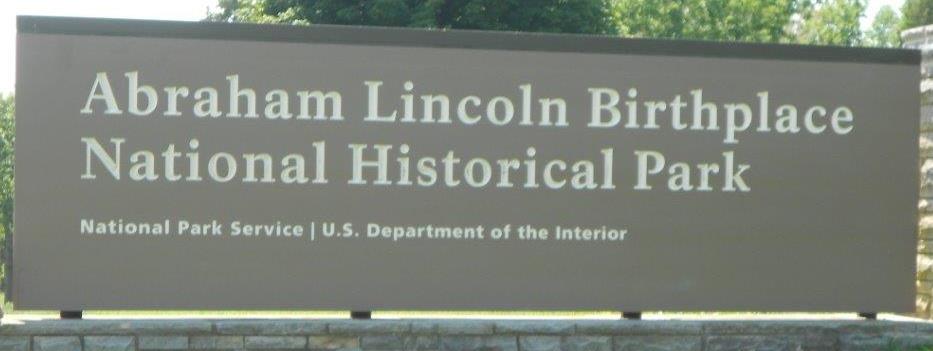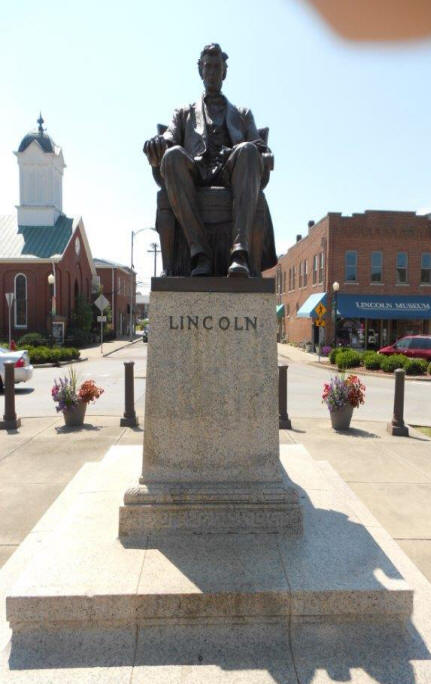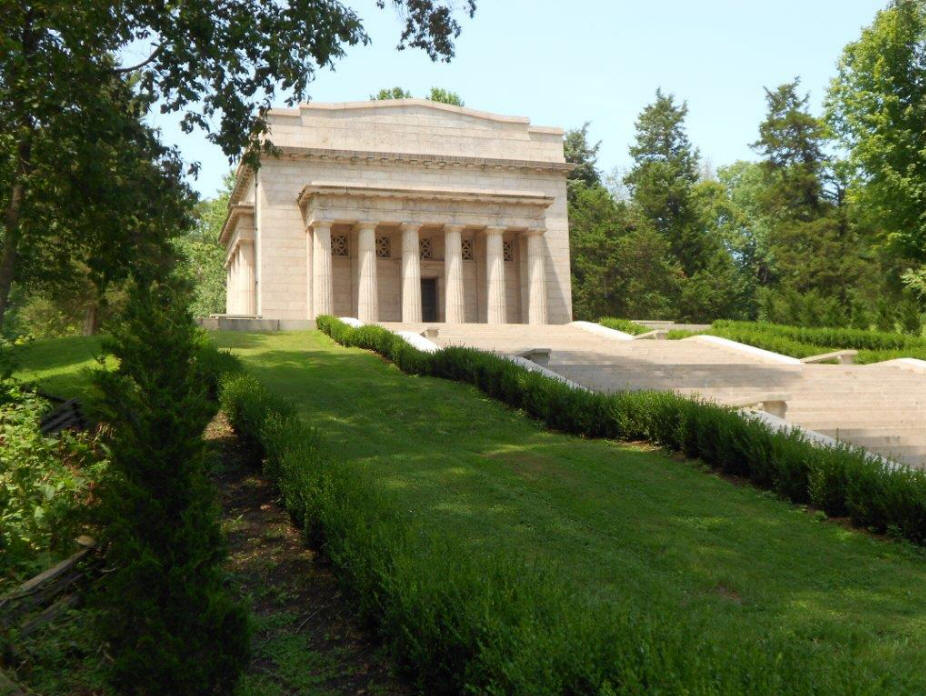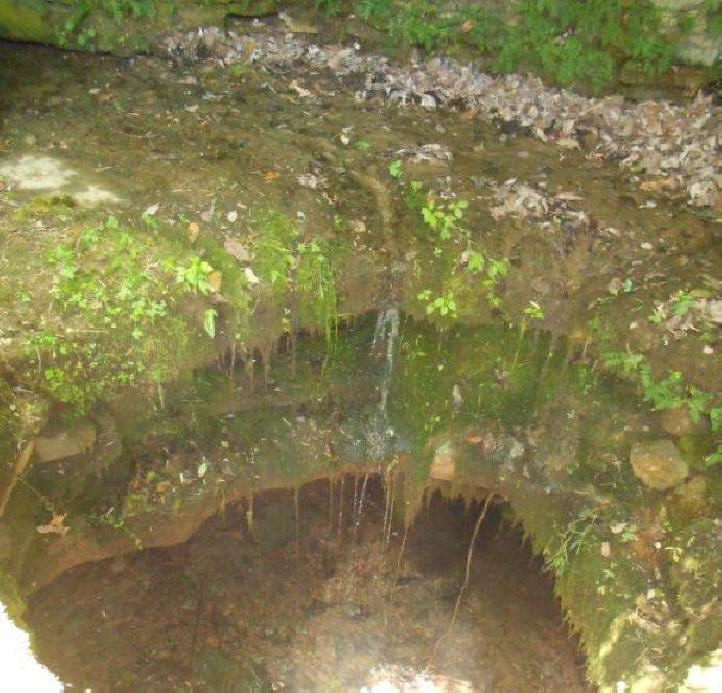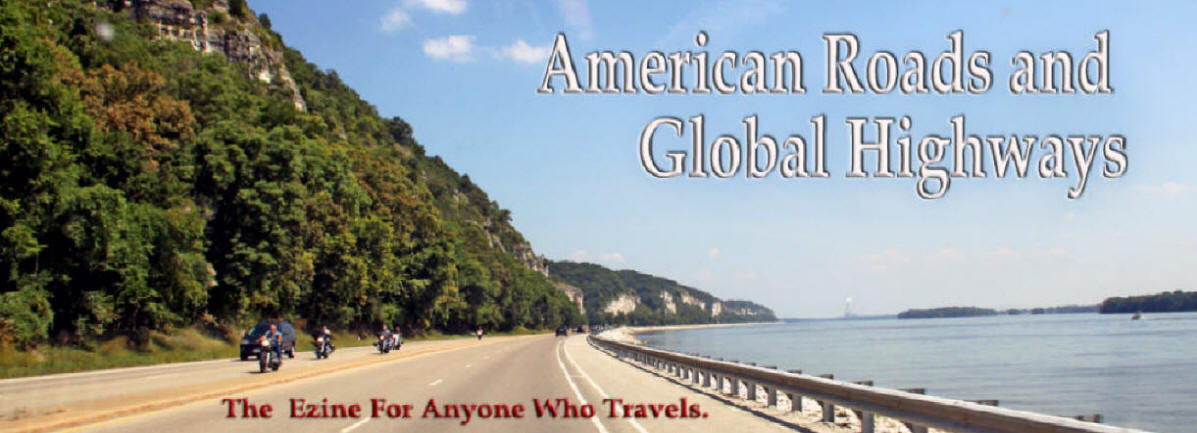
|
|
|
|
|
|
Story by Tom
Straka We covered Abraham Lincoln's childhood in Indiana
in the
Spring 2015 issue and Jefferson Davis in Kentucky
(his birthplace) in the
Spring 2017 issue, so it seemed
appropriate to travel to Abraham Lincoln's birthplace
and see if there really is a log cabin there. We did and
there is. The location is a National Historical Park
near Hodgenville, Kentucky, about 65 miles south of
Louisville.
Yes, there was a cabin. Thomas Lincoln and Nancy Hanks married in 1806 and settled in Elizabethtown, Kentucky where they had their first child, Sarah, in 1807. In 1808 they moved to Sinking Spring Farm on the south fork of Nolin Creek, a few miles south of Hodgenville. They paid $200 for a 300 acre farm. Their new home was a cabin, approximately 16 feet by 18 feet in size, constructed with about 143 oak and chestnut logs. It had a stone fireplace, one door and one window, wooden shingle roof, and a dirt floor. They were expecting a second child.
The farm was named for a spring that supplied
water on the property; it was located in a deep cave and
is still there today, just below the hill on which
Lincoln was born. The spring was likely an important
factor determining the location of the cabin. Abraham
Lincoln's first taste of water must have come from that
spring. On February 12, 1809, Nancy Hanks, lying on a bed
of cornhusks and bearskin, gave birth to a son in that
cabin. He was named Abraham, after his grandfather. Due
to problems with the land title, the family was forced
to move from the farm two years later. Abraham Lincoln
later wrote that his first memories did not include the
Sinking Spring Farm. During that two years a young oak
sapling grew near the cabin. It was called the Boundary
Oak and survived until 1976. Its location is on the
park's map. In 1811, the Lincoln family moved a short
distance east of Hodgenville to a farm on Knob Creek,
where the soil was more fertile. In his 1860 campaign
biography he wrote: "My earliest recollection, however,
is of the Knob Creek place." Those recollections
included planting pumpkin seeds in the creek's
bottomlands, only to see them washed away by a flash
flood; falling into Knob Creek and almost drowning
before being saved by a friend, Austin Gollaher; and of
his younger brother, Thomas dying of an unknown disease
and being buried nearby. He and his sister Sarah walked
two miles to a small school. This is also where Lincoln
first witnessed the cruelty of slavery. The family
eventually moved to Indiana in 1816, due to further land
title problems and "partly on account of slavery."
The National Historical Park includes two units,
about ten miles apart: Sinking Spring Farm and the
boyhood home at Knob Creek. The Sinking Spring Farm unit
has the birthplace, memorial building (with cabin),
Sinking Spring, site of the Boundary Oak, and a visitor
center.
The first Lincoln Memorial was constructed on a
knoll above Sinking Spring, the most likely location of
the original Lincoln cabin. It was built between 1909
and 1911 in an ancient Greek and Roman architectural
form using Connecticut granite and Tennessee marble.
Theodore Roosevelt laid the cornerstone. Symbolism is
not difficult to notice within the memorial: fifty-six
steps lead up to the memorial, representing the years of
Lincoln's life; there are sixteen windows and the
interior ceiling has sixteen rosettes to remind visitors
that Lincoln was the sixteenth president; and the center
of the memorial contains the symbolic birth cabin of
Abraham Lincoln on the site of the birth. It is called a
"symbolic" cabin as it is not the actual cabin, but one
that was nearby on the property. It is what the original
cabin would have looked like.
Sinking Spring is still at the bottom of the knoll, down the fifty-six steps. It got its name from dropping into a pit and disappearing into the earth. It is cave-like, what you would expect in this part of Kentucky.
The Lincoln family lived on about thirty acres of the Knob Creek Farm until the time Abraham Lincoln was almost eight years old. The fields are still there and another cabin. Knob Creek is just a short walk.
It is a very interesting historical site. Americans tend to know about Lincoln's log cabin. It is something to actually see it, if only symbolically. The two farms themselves give much insight into what Lincoln's early life must have been like. Combined with the Lincoln Boyhood National Memorial in Indiana (about 110 miles northwest by road), these National Park sites provide a fascinating overview of Abraham Lincoln's early life.
Authors:
Thomas J. Straka is a forestry professor at Clemson
University in South Carolina. His wife, Patricia, is a
consulting forester. Both have a keen interest in
history.
For more
information: Abraham Lincoln's Birth:
http://rogerjnorton.com/Lincoln88.html
The First Lincoln Memorial:
https://www.nps.gov/abli/index.htm Boyhood Home at Knob Creek: https://www.nps.gov/abli/planyourvisit/boyhood-home.htm |
Connect with us on:
American Roads and | ||||||||||||||||
|
Public Disclosure--
Please Read I recently learned of a FTC law requiring web sites to let their readers know if any of the stories are "sponsored" or compensated. American Roads and Global Highways' feature writers are professional travel writers. As such we are frequently invited on press trips, also called fam trips. Most of the articles here are results of these trips. On these trips most of our lodging, dining, admissions fees and often plane fare are covered by the city or firm hosting the trip. It is an opportunity to visit places we might not otherwise be able to visit and bring you a great story. However, no one tells us what to write about those places. All opinions are 100% those of the author of that feature column. |
|||||||||||||||||
|
Privacy Policy/ Archives /
Contributors /
Subscribe to
American Roads Books by
Kathleen Walls /
Contact /
Sponsor or Advertise/ American Roads & Global Highways Home Page
|
